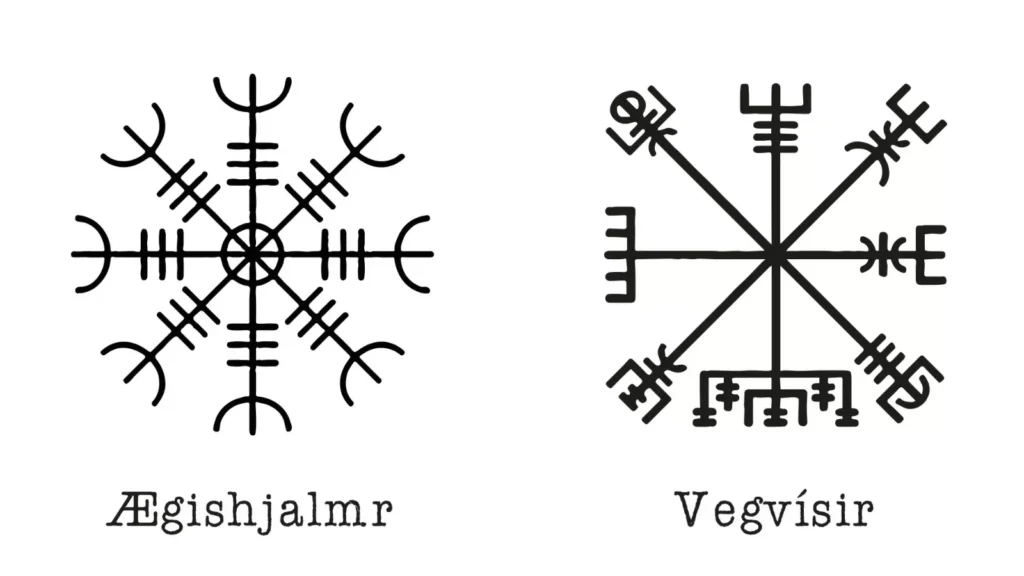Rome, September 17th – Ægishjalmr and Vegvísir: two symbols that have been gaining popularity in recent years, yet often misunderstood. While Vegvísir has become a well-known symbol in the world of Norse mythology, Ægishjalmr remains in its shadow, perhaps due to its difficult name to pronounce and write. However, both symbols hold great significance and should not be overlooked.
Ægishjalmr, also known as the Helm of Awe, is a powerful symbol of protection and strength. Its name comes from the Old Norse words “ægir” meaning “terror” and “hjalmr” meaning “helm”. It is believed that this symbol was used by warriors to instill fear in their enemies and protect themselves in battle. The symbol is made up of eight arms radiating from a central point, resembling a compass. This design is said to represent the eight directions of the world, symbolizing the all-encompassing protection of the symbol.
On the other hand, Vegvísir, also known as the Viking Compass, is a symbol of guidance and direction. Its name comes from the Old Norse words “veg” meaning “way” and “vísir” meaning “pointer”. It is believed that this symbol was used by Vikings as a navigational aid, guiding them through rough seas and unknown territories. The symbol is made up of eight arms radiating from a central point, similar to Ægishjalmr, but with additional runic symbols within the arms. These symbols are believed to have magical powers, providing protection and guidance to the bearer.
Despite their similar appearance, Ægishjalmr and Vegvísir have different meanings and purposes. While Ægishjalmr is a symbol of protection and strength, Vegvísir is a symbol of guidance and direction. Both symbols, however, share the same powerful and mystical qualities that have made them popular among those who are drawn to Norse mythology and its symbolism.
In recent years, these symbols have gained popularity and have been used in various forms of art, jewelry, and tattoos. However, with their growing popularity, there has also been some confusion and misinformation surrounding them. Some have mistakenly used the symbols interchangeably, while others have misinterpreted their meanings.
It is important to note that these symbols hold great significance in Norse mythology and should be respected and used correctly. They are not just trendy designs, but symbols deeply rooted in ancient beliefs and traditions. As such, it is essential to understand their meanings and use them with respect and reverence.
In conclusion, Ægishjalmr and Vegvísir are two powerful symbols that hold great significance in Norse mythology. They may have similar appearances, but their meanings and purposes are distinct. As their popularity continues to grow, it is important to use them correctly and with respect, honoring their ancient origins. Let these symbols guide and protect you, as they have done for centuries.

